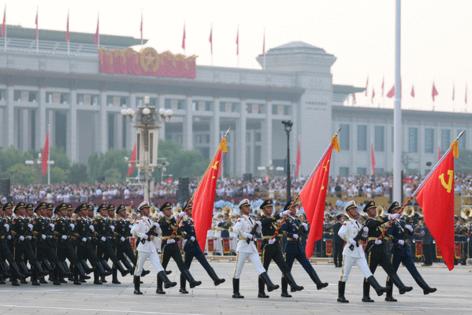Commentary: America doesn't have to depend on China to build chips and batteries
Published in Op Eds
As President Donald Trump decides to invest in Intel to secure American chips, batteries are not far behind.
For too long, America has been sleepwalking into a dangerous dependency on Chinese battery technology. It’s not just about electric vehicles or smartphones anymore. It’s about national security, economic resilience, and the ability to stand firm in the face of geopolitical tension. And make no mistake: the stakes are high.
Chinese-made batteries, particularly those embedded with sensitive components, pose a dual threat. First, they can serve as conduits for data collection, quietly siphoning information from American infrastructure. Second, in the event of a conflict, such as over Taiwan, China could simply flip the switch and cut off battery supplies, crippling everything from our energy grid to our defense systems.
This is what Chinese battery maker Dongguan Poweramp Technology Ltd. did to drone company Skydio on the instructions of the Chinese Communist Party. In October 2024, Beijing banned the exports of batteries to Skydio after the company sold drones to Taiwan’s National Fire Agency that are critical to civilian safety.
But here’s the good news: America doesn’t need to rely on China. Not anymore.
A quiet revolution is underway in battery chemistry. Lithium Iron Phosphate (LFP) batteries are rapidly overtaking their Nickel Manganese Cobalt (NMC) counterparts. They’re up to 50 percent less expensive. They last longer, and because of their lower energy density, they’re less prone to the fiery meltdowns that have plagued NMC designs.
More importantly, the materials needed for LFP batteries—lithium, graphite, iron, and phosphate—can be sourced right here in the United States. Lithium from North Carolina, Nevada, and Arkansas. Iron from Minnesota and North Dakota. Phosphate from Florida and Louisiana. No need to rely on cobalt from the Congo or nickel from Indonesia and Russia. No need to play supply chain roulette with autocratic regimes.
LFP batteries aren’t just for cars. They power data centers, grid-scale energy storage, EV charging stations, and homes. They’re also vital for defense applications, from aerial drones to underwater vehicles. Yet despite the construction of multiple LFP gigafactories by Tesla, Ford, GM, LG, and Samsung, one critical piece remains missing: the cathode active material (CAM). It’s still made in China.
Enter Sparkz, an American startup with a solution. Sparkz has developed a domestic technology to produce CAM for LFP batteries at scale, with performance and cost parity to Chinese products. A Sacramento plant is already in production. Now, Sparkz is preparing to scale up to a 44,000-ton capacity by 2029, with a main plant in Oklahoma, and other satellite plants throughout the United States.
With the One Big Beautiful Bill Act removing incentives for Chinese batteries and helping the domestic market through the 45X advanced manufacturing production credit, Congress has helped localize the LFP supply chain, secure our energy future, and establish America as a global leader in battery innovation.
The Act also provided the Defense Department’s Office of Strategic Capital with $500 million in credit, which can be used to create $100 billion in loans for critical mineral projects. This month MP Materials, a U.S. rare earths mine, received a $150 million loan to expand its critical materials processing in Mountain View, California.
The Chinese Communist Party controls the critical mineral supply chain. It’s both an economic risk and a national security threat to allow the Chinese Communist Party to control the critical mineral supply chain. American companies must reorient towards domestic suppliers, the sooner the better.
We can build batteries as well as chips, and we can build them here.
____
Diana Furchtgott-Roth directs the Center for Energy, Climate, and Environment at The Heritage Foundation and is a member of the advisory board of Sparkz. The views expressed herein are her own and do not reflect an institutional position for The Heritage Foundation or its Board of Trustees.
_____
©2025 Tribune Content Agency, LLC.
























































Comments